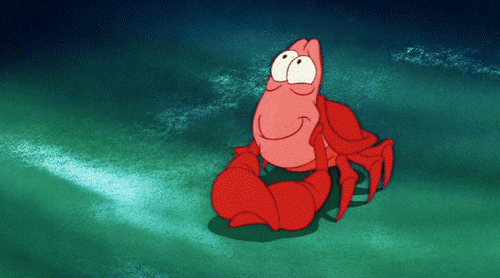It’s 2021, and millennials just can’t have nice things. From form-fitting jeans that taper at the ankle to parting our hair off-center to the show Friends, the things we once loved are just not it in 2021. Which is why it brings me absolutely no joy to report that I am about to ruin a childhood fav: The Little Mermaid. “But how could a Disney movie be problematic?” you ask, hopefully ironically. In short, the Disney movie that you tried to emulate at the pool every summer as a child is filled with patriarchal tropes and, for having a female protagonist, sends a pretty not-great message about women. And before you accuse me of being a hater, this is coming from Malcolm Gladwell, author of five New York Times bestsellers, including Tipping Point and Outliers, and host of the Revisionist History podcast, now in its second season. Gladwell appeared on the Afternoon Tea podcast with Sami Sage to talk about the newest season of Revisionist History, his writing process, and more, and he had some choice things to say about one of our favorite Disney Princess movies.
Now, to be fair, the Disney love story we get about the mermaid who wanted to be where the people are is quite… well, Disney-fied, and nothing like the original fairytale on which the movie is based. The movie about Ariel and Prince Eric is based on a fairytale of the same name by the Danish author Hans Christian Anderson and was first published in 1837 (so, I mean, that could be one reason female empowerment was not exactly front and center). It starts off kind of the same as the Disney movie, with a little mermaid falling in love with a prince and visiting a sea witch for legs in exchange for her beautiful singing voice. However, in exchange for getting legs, Anderson’s mermaid feel like she’s walking on knives with every step. Ouch. And, in the original fairytale, the little mermaid basically gets friend zoned by the prince, and he marries someone else. Then, she’s given the opportunity to return to the sea if she stabs the prince and kills him. What?? But the little mermaid can’t bring herself to do it (the things we do for a toxic ex), and instead she sacrifices herself. Her benevolence is rewarded by her being turned into an earthbound spirit, instead of just dissolving into sea foam and her soul evaporating. Happy ending! I guess???
That said, the template we are working with is kind of dark, but there are still a few ways this Disney classic doesn’t exactly hold up in 2021.
Ariel Goes From Being Independent To Dependent On A Man

In the beginning of the Disney version of The Little Mermaid, Ariel is a pretty independent lady. She likes doing her own thing, exploring, and doesn’t care about what her dad wants. (In fact, she resents having to listen to her father.) She’s “adventurous and full of life and wants to explore the world and doesn’t want to be trapped in all the kind of stereotypical roles that young women get trapped into,” Gladwell elaborates, “and she has this desire to become a princess.” So then she makes a deal with Ursula and gets herself in a bind—and who has to rescue her? You know the answer: Prince Eric.
“There’s your problem number one,” Gladwell says. “A young woman full of life and adventure and intelligence and verve, and the only way out of her dilemma is [for] a man to come along and bail her out?”
There’s also the problem of Ariel literally having to give up her voice—and for the only way to get her voice back being for a man to get it for her. “Which is nuts!” Gladwell exclaims. “What kind of message is that!”
The movie creates this fantasy for young girls, where if you just casually give up your ability to communicate you’ll be rewarded by marrying a handsome prince. One reasons why that’s problematic is because “it sends this incredibly retrograde message to young girls about where they can find their freedom and who’s in control of their destiny.”
Sebastian Is Kinda Problematic

How did we not see it before? Sebastian is the only character in the entire movie who doesn’t have the same accent as all the rest of the sea creatures and Prince Eric. Why is that? Even more suspect is his specific role in the movie, which is to basically be Ariel’s lackey. Gladwell says, “The world that Disney creates within these movies is a world of princes and princesses and then a whole cast of characters who serve them.” Sebastian is one such character, much like Abu, or the seven dwarves, or Cinderella’s mice, or even Flounder. But in The Little Mermaid, for some reason, one of the princess’s sidekicks is a crab with a Jamaican accent—and “not a good one,” Gladwell adds. “This is a movie that has this subservient character, a Black guy from the West Indies… all of this is the kind of thing you would tell your kids if you were in 1860 if you were in a country house in England”, but in 21st century America, maybe we should examine with a critical eye.
Prince Eric Straight-Up Commits A Murder

I mean, I know Ursula is the villain and everything, but have we ever talked about how Eric legit kills her? Not so kid-friendly, is it? I mean, sure, Ursula tries to steal Ariel’s man, but still, ending a movie on a murder is kinda dark. So not only can Ariel not save herself, and has to get rescued by Prince Eric (which, to me fair, is kind of the theme of all these movies), but how exactly does he do that? “By committing a murder in cold blood,” Gladwell recounts.
Even more interesting is the way Ursula is portrayed in the cartoon versus the way she—and other villains—are examined in recent origin story films, such as Cruella and Maleficent. While I can understand why kids movies are given one-dimensional villains who are just evil for sport, it does present some ethical questions. “In the Disney movie we take the troubled, unhappy, [and we] exile and we murder them,” Gladwell says. “We ram them with the prow of our ship—very violent.” While a version where Ariel and Ursula have a conversation and hash out their differences doesn’t exactly make for dramatic cinema, it does present a more well-adjusted example of conflict mediation.
The Contract Is Not At All How The Law Works

A perhaps lesser, but still noteworthy, point is that the contract Ariel signs is not at all how contracts work—which is significant because, as Gladwell says, “6-year-olds and 7-year-olds are forming their interpretation on what the law is at that age.” Meanwhile, Ariel literally signs her voice away in this unbreakable agreement, which is totally unrealistic because, Gladwell explains, “There’s no such thing as a contract that can’t be broken!” I mean, this is a good point—Ariel’s dad is literally the king of the sea, and even he can’t get her out of this bind? I know international waters are lawless, but what kind of legal system are they running with under the sea? I have some questions, like should I be making all parties to an agreement sign contracts with an illuminated feather pen?
In Revisionist History, Gladwell reexamines something from the past and inquires whether we got it right the first time. Listen to the second season out now, and check out the full interview with Gladwell below.
Images: Giphy (4); Disney




















































